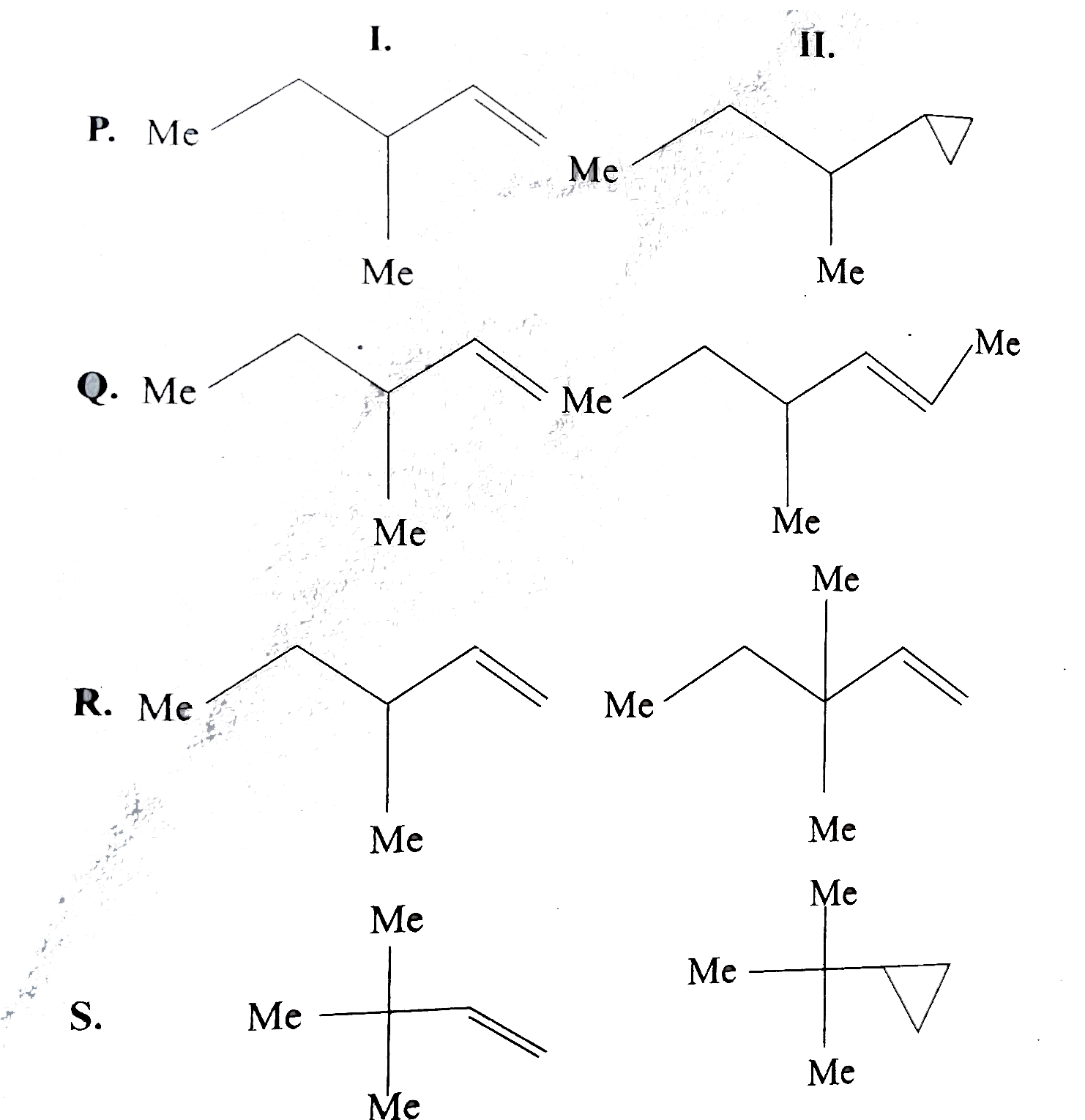Give the structure of an optically active alkyne (A) having the lowest molecular mass, which on hydrogenation with Lindlard's catalyst and Birch reduction gives the same lowest molecular mass optically active alkene.
To solve the problem, we need to find an optically active alkyne (A) with the lowest molecular mass that, upon hydrogenation with Lindlar's catalyst and Birch reduction, yields the same optically active alkene. Here’s a step-by-step breakdown of the solution:
Step 1: Identify the Structure of the Optically Active Alkyne (A)
We need an alkyne that has a chiral center, which will make it optically active. The simplest alkyne that can be considered is 3-methyl-1-butyne. Its structure can be represented as follows:
CH3∣H3C−C≡C−CH2−CH3
Step 2: Hydrogenation with Lindlar's Catalyst
When we treat the alkyne with hydrogen (H2) in the presence of Lindlar's catalyst, it selectively reduces the alkyne to a cis-alkene. The product will be:
CH3∣H3C−C=C−CH2−CH3
This compound is optically active due to the presence of a chiral center.
Step 3: Birch Reduction
Next, we perform Birch reduction on the same alkyne. Birch reduction typically converts alkynes to trans-alkenes. The product will be:
CH3∣H3C−C=C−CH2−CH3
This compound is also optically active and has the same structure as the product from the Lindlar's catalyst hydrogenation.
Conclusion
Both reactions yield the same optically active alkene from the same optically active alkyne (A). Thus, the structure of the alkyne (A) is 3-methyl-1-butyne.
Final Answer
The structure of the optically active alkyne (A) is:
CH3∣H3C−C≡C−CH2−CH3
We need an alkyne that has a chiral center, which will make it optically active. The simplest alkyne that can be considered is 3-methyl-1-butyne. Its structure can be represented as follows:
When we treat the alkyne with hydrogen (H2) in the presence of Lindlar's catalyst, it selectively reduces the alkyne to a cis-alkene. The product will be:
Next, we perform Birch reduction on the same alkyne. Birch reduction typically converts alkynes to trans-alkenes. The product will be:
Both reactions yield the same optically active alkene from the same optically active alkyne (A). Thus, the structure of the alkyne (A) is 3-methyl-1-butyne.
The structure of the optically active alkyne (A) is:
CH3∣H3C−C≡C−CH2−CH3
Topper's Solved these Questions
- ALKENES AND ALKADIENESBOOK - CENGAGE CHEMISTRY ENGLISHCHAPTER - ALKENES AND ALKADIENESEXERCISE - EXERCISES
29 Videos
- ALKENES AND ALKADIENESBOOK - CENGAGE CHEMISTRY ENGLISHCHAPTER - ALKENES AND ALKADIENESEXERCISE - linked Comprehension Type
38 Videos
- ALKENES AND ALKADIENESBOOK - CENGAGE CHEMISTRY ENGLISHCHAPTER - ALKENES AND ALKADIENESEXERCISE - Single correct Answer
14 Videos
- ALKANES AND CYCLOALKANESBOOK - CENGAGE CHEMISTRY ENGLISHCHAPTER - ALKANES AND CYCLOALKANESEXERCISE - Archives
13 Videos
- ALKYNESBOOK - CENGAGE CHEMISTRY ENGLISHCHAPTER - ALKYNESEXERCISE - Exercises (Archives - Analytical and Desriptive Type)
4 Videos
Similar Questions
Give the structure of an optically active alkene (A) having the lowest molecular mass, which on catalytic hydrogenation gives an optically inactive compound (B).
View SolutionAmongst the following compounds, the optically active alkane having lowest molecular mass is:
View SolutionAmongst the following compounds, the optically active alkane having lowest molecular mass is:
View SolutionGive examples of some optically active polymers
View SolutionThe total number of optically active alkynes having molecular formula C3FClBrI is
View SolutionName the lowest molecular weight alcohol which is optically active.
View SolutionCarbene intermediates are produced by the photolysis of diazomethane (CH2N2) or kenene (CH2=C=O). They are also produced by the reaction of CHX3 with base or by Simmons-Smith reaction. There are two types of carbenes, singlet and triplet. They are so called due to their spin state.
An optically active alkene (I) with lowest molecular mass on hydrogenation gives optically inactive alkene, but on insertion of methylene carbene (:CH2) in (I), it gives optically active compound (II). The compounds (I) and (II) are :
 .
.
View SolutionGive the structure and the IUPAC name of the lowest molecular mass aliphatic monocarboxylic acid containing a chiral carbon.
View SolutionGive the structure and the IUPAC name of the lowest molecular mass aliphatic monocarboxylic acid containing a chiral carbon.
View SolutionGive the structure and the IUPAC name of the lowest molecular mass aliphatic monocarboxylic acid containing a chiral carbon.
View Solution
